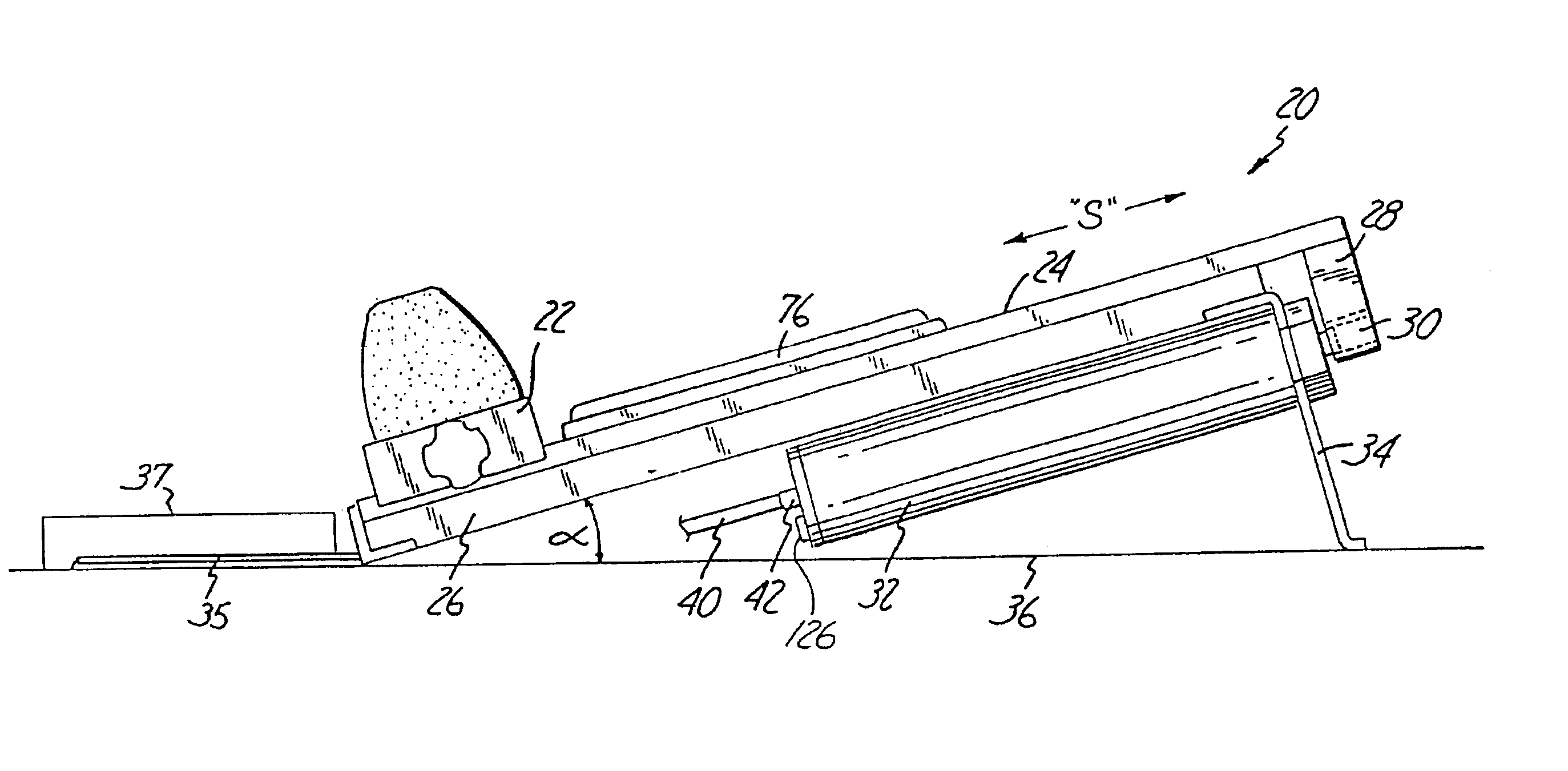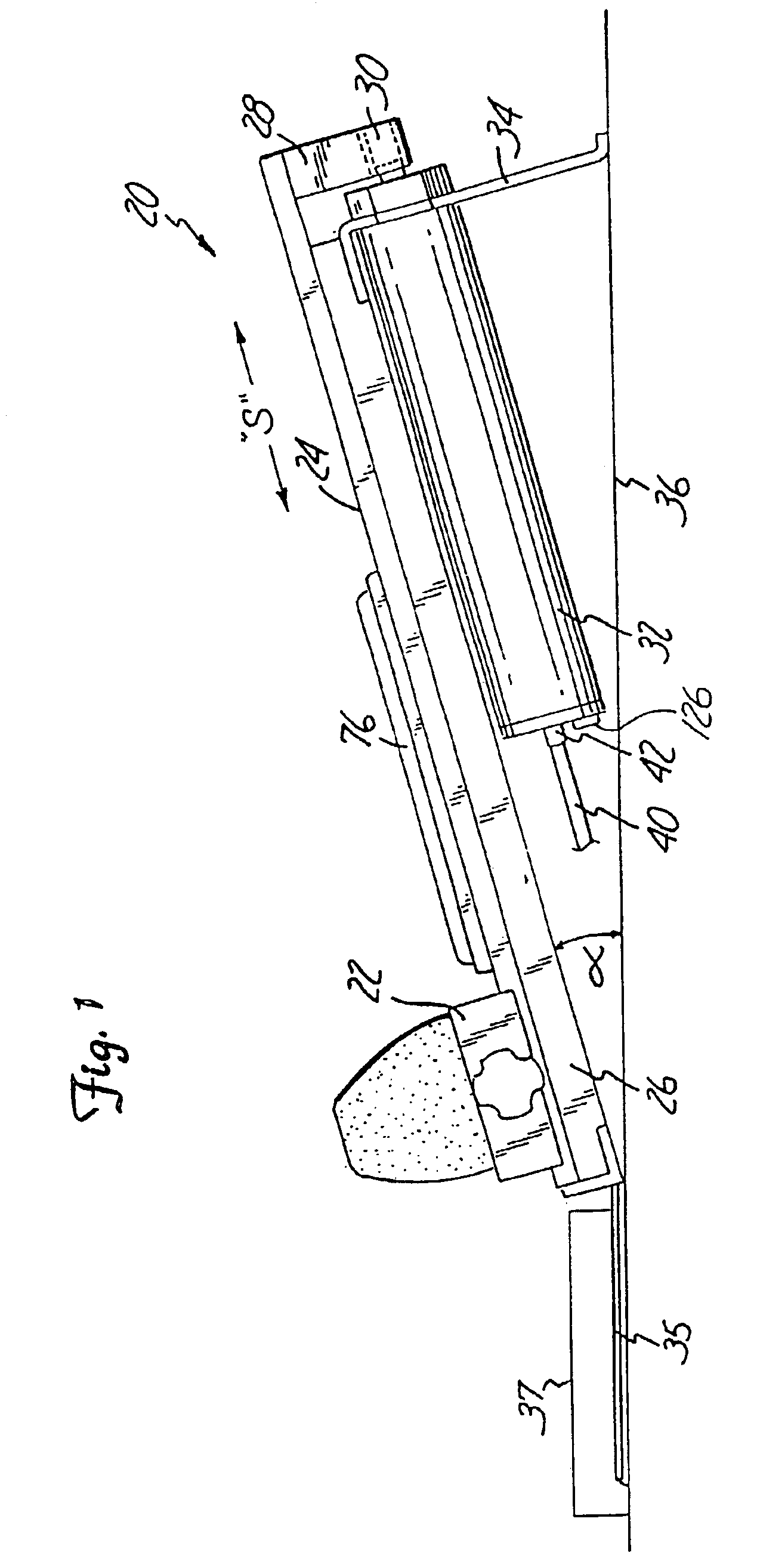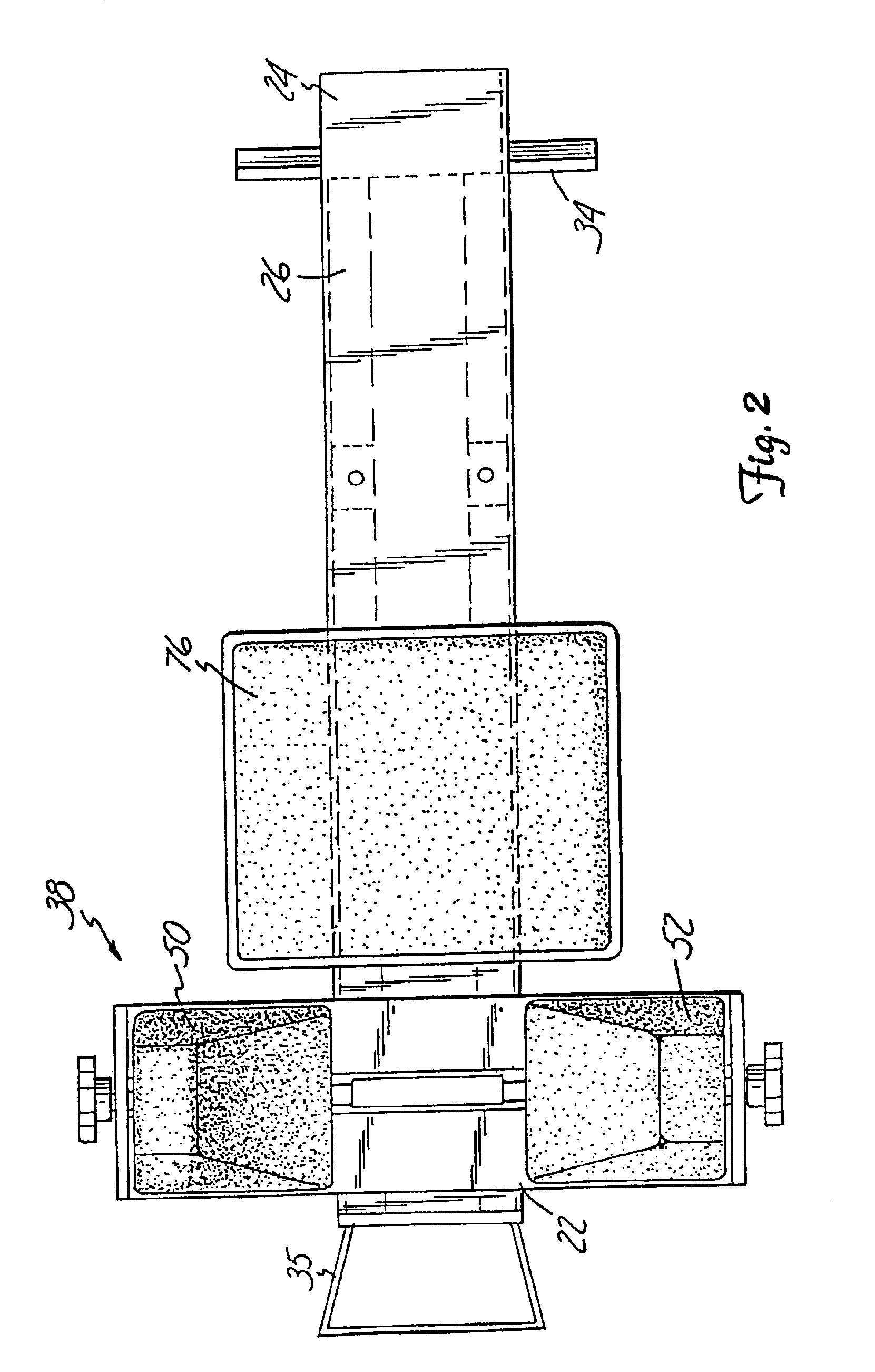Portable cervical traction device
a traction device and portable technology, applied in the field of portable traction devices, can solve the problems of inconvenient home use, high cost of equipment needed for traction, and the distraction or separation of vertebrae of spinal traction, and achieve the effect of sufficiently low cost portable traction devices for home us
- Summary
- Abstract
- Description
- Claims
- Application Information
AI Technical Summary
Problems solved by technology
Method used
Image
Examples
first embodiment
[0038]FIG. 8 illustrates a portable, lumbar traction device 140 in which the pneumatic cylinder 32 is attached to a portable traction device 140. The portable, lumbar traction device 140 includes a frame 150 retaining a support surface 152. In a first embodiment, a pelvic belt 142 retains the patient's pelvis to a sliding portion 154, which slides along track 156. The pneumatic cylinder 32 mounted to the frame 150 is coupled to the sliding portion 154 so that the sliding portion 154 moves along the track 156, creating a traction force “F” when the cylinder 32 is pressurized. A counter traction belt 148 provides a passive counter traction force on the patient's lower rib cage. The pneumatic cylinder 32 preferably maintains a static traction force of greater than 445 N (100 lbs.) for a period in excess of 10 minutes, and preferably, a static traction force of greater than 890 N (200 lbs.) for a period in excess of 20 minutes, without the need to supply additional pressurized air. It w...
second embodiment
[0039]In a second embodiment, pelvic belt 142 is engaged with the pneumatic cylinder 32 by a cable 144 and pulley 146 configuration mounted at the foot of the portable traction device 140. Counter-traction belt 148 provides a passive counter traction force on the patient's lower rib cage to restrain the patient in a fixed position relative to the portable traction device 140. When the patient activates the pneumatic cylinder 32 as discussed above, the cable 144 is retracted, creating a traction force “F” on the waist belt 142 and the patient's pelvic region. In either of the above embodiments, the counter traction belt 148 may also be coupled to the pneumatic cylinder 32 to provide an active counter traction force in a direction opposite to “F” on the patient.
[0040]FIGS. 9a-9c illustrate an alternate embodiment of a portable, lumbar traction device 200 positioned directly on the support surface 36. Upper body support platform 202 includes a frame 204 supporting a support surface 206...
PUM
 Login to View More
Login to View More Abstract
Description
Claims
Application Information
 Login to View More
Login to View More - R&D
- Intellectual Property
- Life Sciences
- Materials
- Tech Scout
- Unparalleled Data Quality
- Higher Quality Content
- 60% Fewer Hallucinations
Browse by: Latest US Patents, China's latest patents, Technical Efficacy Thesaurus, Application Domain, Technology Topic, Popular Technical Reports.
© 2025 PatSnap. All rights reserved.Legal|Privacy policy|Modern Slavery Act Transparency Statement|Sitemap|About US| Contact US: help@patsnap.com



